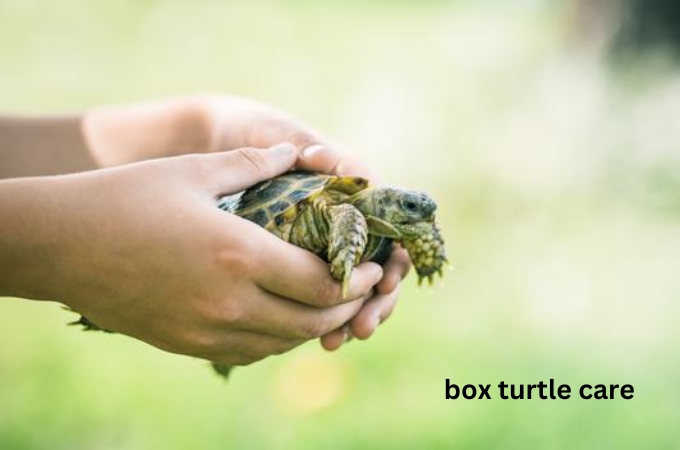How Do Box Turtles Find Their Nesting Sites?
How do box turtles find their way back to their nesting sites? It’s a question that has puzzled researchers and nature enthusiasts alike. These remarkable creatures, with their majestic shells and slow, deliberate movements, possess an innate navigation system that allows them to return to their nesting sites year after year. But how do they do it?
The answer lies in a combination of their incredible sense of smell, their ability to detect magnetic fields, and their keen memory. By harnessing these unique abilities, box turtles have mastered the art of finding their way home.
In this article, we will delve deeper into the fascinating world of box turtle navigation and explore the wonders of their remarkable journey. So let’s embark on this intriguing adventure and uncover the secrets of how these extraordinary creatures navigate their way back to their nesting sites.
How do box turtles find their way back to their nesting sites?
Box turtles are fascinating creatures with unique behavior patterns, and one of the most fascinating aspects of their life cycle is their ability to navigate and find their way back to their nesting sites. Despite being slow-moving creatures, box turtles possess remarkable navigational skills that allow them to return to the exact location where they were born to lay their own eggs. In this article, we will delve deeper into the mechanisms that box turtles employ to locate and return to their nesting sites.
Section 1: The Life Cycle of Box Turtles
Box turtles, scientifically known as Terrapene carolina, are native to North America and are known for their distinctive dome-shaped shell and vibrant colors. Before we explore their navigational abilities, let’s first understand their life cycle.
1.1 Hatchlings and Juvenile Stage
When box turtles hatch from their eggs, they are about the size of a quarter and are highly vulnerable. They spend their early years foraging, growing, and learning necessary survival skills in their immediate surroundings.
1.2 Adult Stage and Reproduction
As box turtles reach maturity, usually around 5-7 years old, they become sexually active. During the breeding season, male box turtles actively roam in search of potential mates, utilizing their keen sense of smell to locate females. Once mating occurs, the female box turtle searches for an optimal nesting site to lay her eggs.
Section 2: Box Turtles’ Homing Instinct
While many reptiles exhibit homing behavior, box turtles’ ability to locate their specific nesting site is truly remarkable. But how exactly do they do it?
2.1 Sensing the Earth’s Magnetic Field
One prevailing theory is that box turtles possess the ability to perceive the Earth’s magnetic field and use it as a navigational aid. Magnetic fields vary across different geographic regions, providing a unique signature for each location. By sensing these magnetic anomalies, box turtles can orient themselves and return to their natal nesting site.
2.2 Environmental Cues and Familiarity
Box turtles have a keen sense of smell, and they rely on familiar scents to navigate their surroundings. Throughout their lives, they become familiar with the distinct smells of their home range, including the scent of the soil, vegetation, and other elements. This familiarity helps them recognize and locate their nesting sites.
Section 3: Spatial Memory and Learning
Box turtles possess an impressive spatial memory that aids in their navigation. As they explore and forage in their environment, they gather information and create a mental map of their surroundings.
3.1 Landmark Recognition
Box turtles are known to rely on prominent landmarks to navigate their territories. These landmarks can be natural elements like distinctive trees, rocks, or bodies of water. By recognizing and memorizing these landmarks, box turtles can pinpoint their nesting site’s location.
3.2 Associative Learning
In addition to landmarks, box turtles also rely on associative learning to find their way back to their nesting sites. They learn to associate specific environmental cues, such as the angle of the sun, the position of the stars, or the sounds of nearby streams, with their nesting location. This learning process helps them navigate even when landmarks are not readily visible.
Section 4: Implications and Conservation
Understanding how box turtles find their way back to their nesting sites is crucial for their conservation and management. Here are some implications and considerations:
4.1 Habitat Fragmentation
Box turtles face significant challenges due to habitat fragmentation caused by human activities. When their habitats are fragmented, box turtles may struggle to navigate and locate their nesting sites. This disruption in their homing abilities can have detrimental effects on their population.
4.2 Conservation Strategies
Conservation efforts should focus on preserving and connecting natural habitats to maintain the box turtles’ homing abilities. Establishing wildlife corridors and protected areas can help maintain their navigational routes.
Section 5: Human Interactions and Recommendations
As humans share habitats with box turtles, it’s essential to be mindful of our interactions and take appropriate steps to ensure their well-being.
5.1 Avoid Relocation
If you encounter a box turtle in its natural habitat, it’s best to leave it undisturbed. Relocating box turtles can disrupt their navigational abilities and disorient them. Respect their natural behavior and let them continue their journey.
5.2 Reduce Habitat Destruction
Human activities such as deforestation, urbanization, and pollution pose significant threats to box turtles and their habitats. Minimizing habitat destruction and maintaining the integrity of their nesting sites are critical for their survival.
Conclusion:
Box turtles possess incredible navigational abilities that enable them to find their way back to their nesting sites. Through the use of magnetoreception, environmental cues, spatial memory, and associative learning, they navigate their surroundings with precision. Understanding and conserving these abilities are vital for the future of box turtle populations. By respecting their natural habitats and working towards habitat preservation, we can help ensure the continued success and survival of these remarkable creatures.
Frequently Asked Questions
How do box turtles find their way back to their nesting sites?
Box turtles possess several mechanisms that help them find their way back to their nesting sites. These mechanisms include:
1. How do box turtles navigate?
Box turtles have a natural ability to orient themselves by sensing Earth’s magnetic field. They use this magnetic map to navigate and find their way back to familiar locations like their nesting sites.
2. Do box turtles rely on their sense of smell?
Yes, box turtles have a keen sense of smell. They can detect scents and follow odor trails, which can guide them towards their nesting sites. They may use their sense of smell in combination with other cues to navigate accurately.
3. Can box turtles memorize their surroundings?
Box turtles have excellent spatial memory. Once they establish a nesting site, they memorize the surrounding landmarks, vegetation, and other distinctive features. This memory helps them return to the same location when it’s time to lay eggs.
4. Do box turtles use visual cues to find their way back?
While box turtles primarily rely on their sense of smell and magnetic sensors, they may also use visual cues to navigate. They can recognize familiar objects, patterns, and even the position of the sun to orient themselves and find their way back to their nesting grounds.
5. Can box turtles use the Earth’s magnetic field to navigate?
Yes, box turtles are known to have magnetoreception abilities. They can sense variations in the Earth’s magnetic field and use this information to navigate. By aligning themselves with the magnetic field, they can determine the direction they need to travel to reach their nesting sites.
Final Thoughts
Box turtles possess a remarkable ability to find their way back to their nesting sites. Through a combination of sensory cues and navigational strategies, these creatures accomplish the task with precision. By relying on their acute sense of smell and memory, they can recognize familiar landmarks and scents along their route, effectively guiding them back to their desired location. Box turtles also utilize magnetoreception, a built-in compass that enables them to detect Earth’s magnetic field and orient themselves accordingly. While the exact mechanisms behind this behavior remain a subject of ongoing research, the navigational prowess of box turtles continues to fascinate scientists and nature enthusiasts alike. How do box turtles find their way back to their nesting sites? This remarkable ability showcases their innate intelligence and adaptation to their environment.

